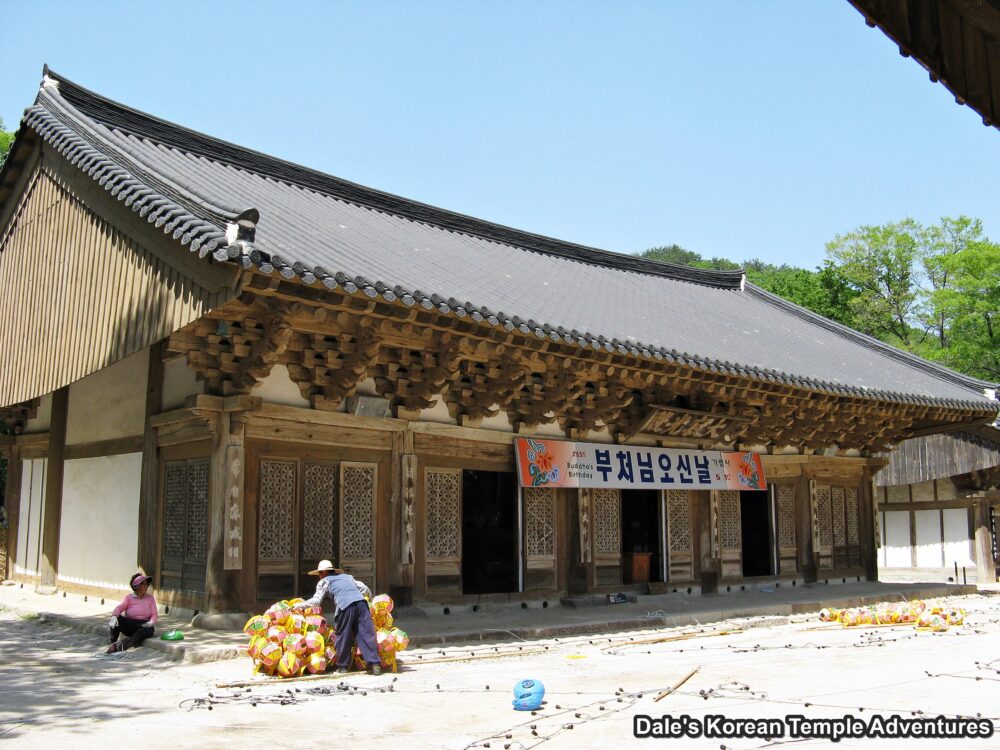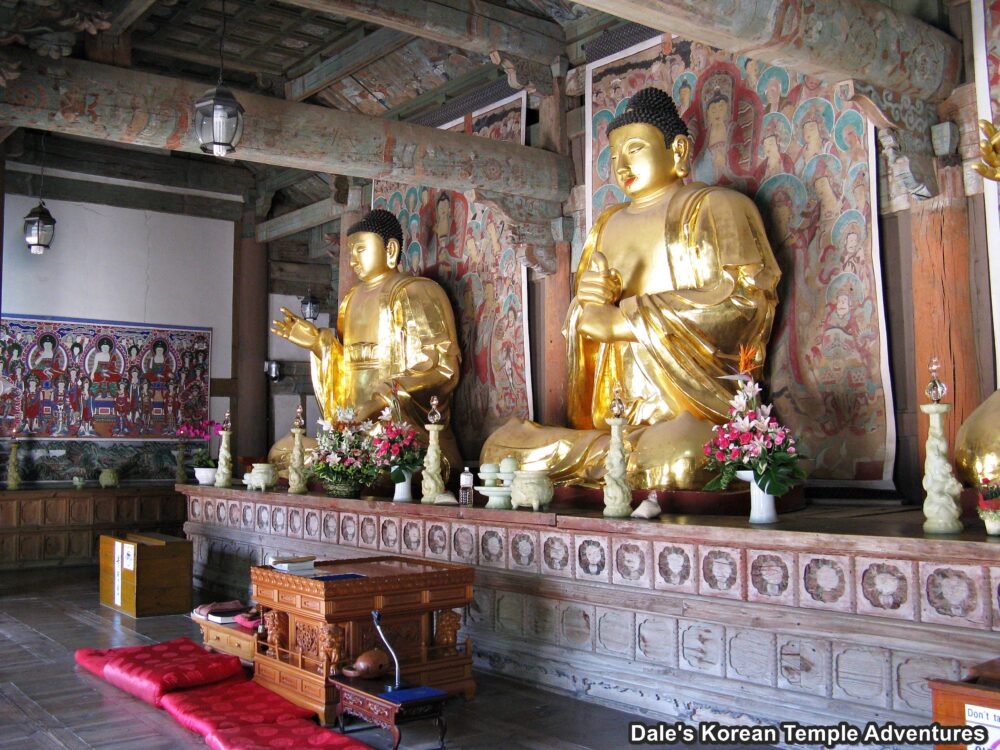Daejeokgwang-jeon – The Hall of Ultimate Silence and Light: 대적광전
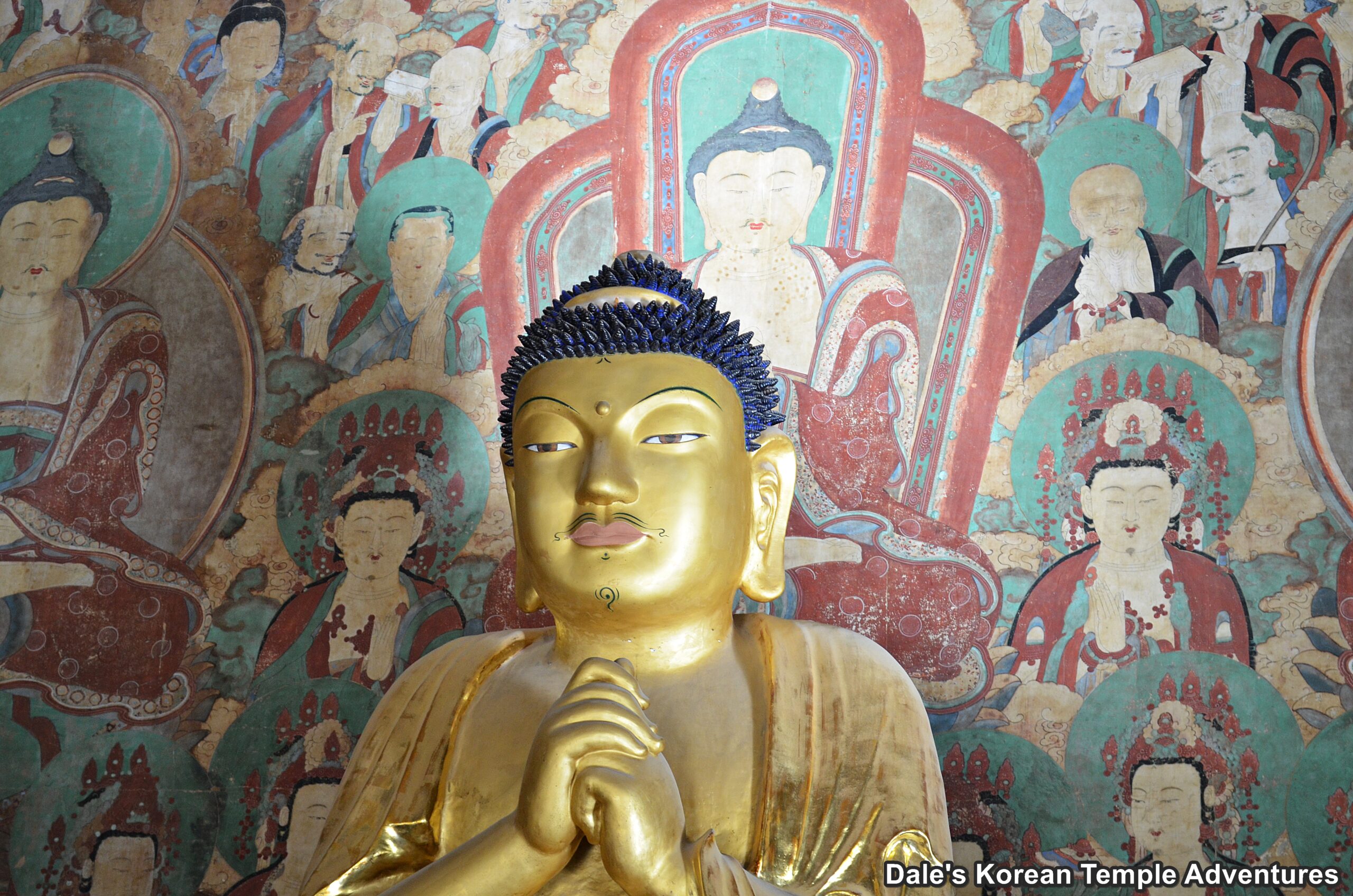
Daejeokgwang-jeon Design
A type of shrine hall that you can find at a Korean Buddhist temple is dedicated to Birojana-bul (The Buddha of Cosmic Energy). Birojana-bul is also commonly referred to as Biro-bul. The name of the hall that Birojana-bul occupies is called the Daejeokgwang-jeon Hall. In English, this translates as “The Great Luminosity Hall,” in English. The reason why this hall has such a name is that Bironjana-bul spreads the light of Buddhist Truth in every direction. He is also the Buddha that embodies the Wisdom of the Universal Law. Expanding on this, the name Birojana-bul literally means “Great Sun Buddha,” in English. The idea behind this is the Birojana-bul emanates a mystic light that is radiant but not blinding. Home in Korea for Birojana-bul is Mt. Sobaeksan, which lies between Danyang, Chungcheongbuk-do and Yeongju, Gyeongsangbuk-do.

The central figure, at least in the Jogye Order of Buddhism (which also just so happens to be the largest order in Korea) is Seokgamoni-bul (The Historical Buddha). In this Order, Birojana-bul plays a secondary role to Seokgamoni-bul. However, in the Hwaeom Sect (or the Flower Garland Sect made famous by Uisang-daesa), of Buddhism in Korea, Birojana-bul becomes the primary figure inside the main hall. The best example of this can be found at Hwaeomsa Temple or Geumsansa Temple. But whatever the sect, Birojana-bul plays a key role in the Korean Buddhist faith.

One of the easiest ways to identify Birojana-bul is through his mudra (ritual hand gesture), which is called a “suin,” in Korean. Birojana-bul can be depicted in any number of different poses. Perhaps the most common mudra for Birojana-bul in Korea is “The Knowledge Fist.” What this mudra consists of is the right hand, forming a tight fist, or “The Diamond Fist,” with the thumb at its centre. “The Diamond Finger,” or the left index finger, is placed inside of the right hand. The entire purpose of this mudra is to dispel darkness. More symbolically, the index finger represents the world of sentient beings, while the right surrounding hand represents the protection brought into the world by Buddhas.
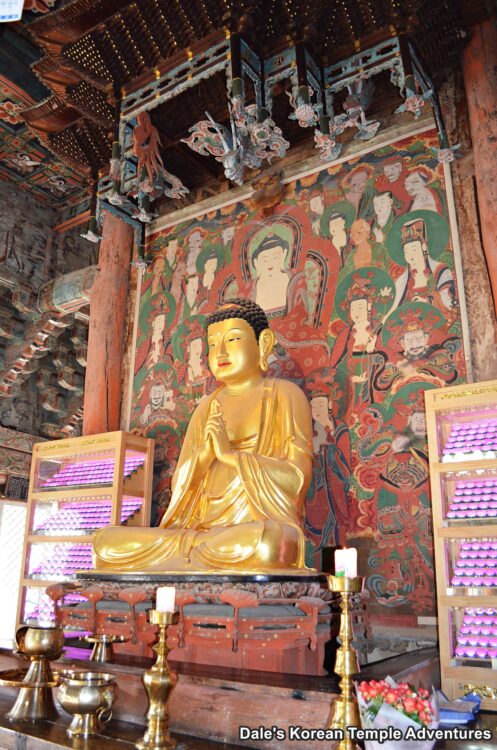
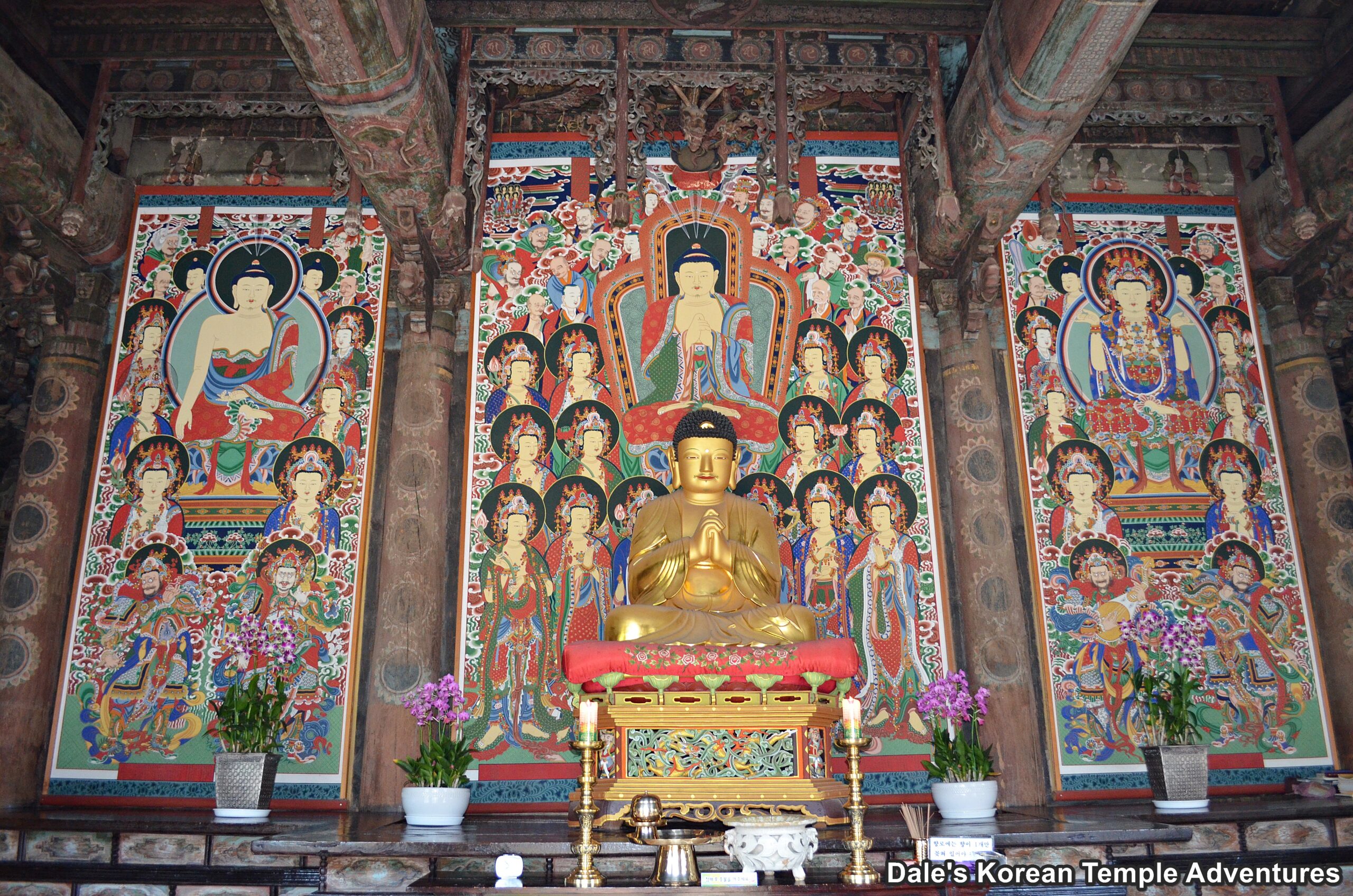
There are several other mudras that Birojana-bul can strike. One mudra has Birojana-bul having both of his hands joined together with the palms in. Another has his fingers crossed over each other with the thumbs fully erect. Yet another mudra has Birojana-bul’s right hand fully encompassing his left hand. All of these varying mudras of Birojana-bul represent the universal knowledge of the Buddha.
Inside the Daejeokgwang-jeon Hall, Birojana-bul sits on the main altar as the central figure. Sometimes, Birojana-bul can be joined by Amita-bul (The Buddha of the Western Paradise) and Seokgamoni-bul. Another variation has Birojana-bul in the centre and being flanked by Seokgamoni-bul, once more. However, Amita-bul, in this variation, is replaced by Rocana. This triad of statues represents the three bodies of the Buddha. Birojana-bul represents the transcendence of form, which is replaced by the realization of truth (Dharma-kaya). Rocana, on the other hand, is the Buddha-body that is the “reward body” for merits earned by the Buddha as a Bodhisattva (Sambhoga-kaya). And Seokgamoni-bul is the response that was needed to teach sentient beings (Nipmana-kaya). These three bodies represent how the Buddha reveals himself in a variety of ways to people depending on their spiritual ability and capacity.

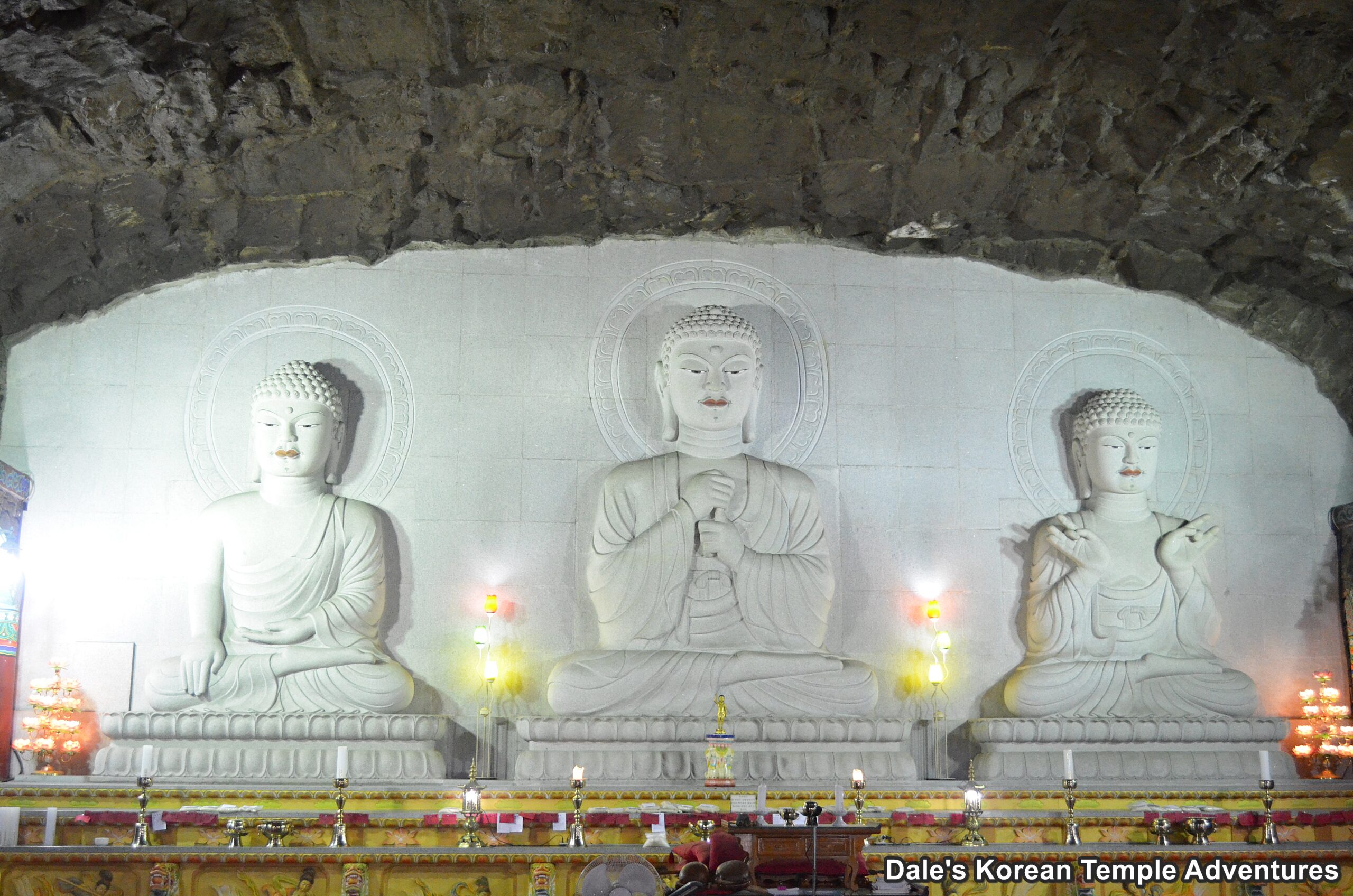
Great Examples
Great examples of the Daejeokgwang-jeon Hall in Korea can be found at Unmunsa Temple in Cheongdo, Gyeongsangbuk-do, Tongdosa Temple in Yangsan, Gyeongsangnam-do, Bulguksa Temple in Gyeongju, Beomeosa Temple in Busan, and Magoksa Temple in Gongju, Chungcheongnam-do.
Two Daejeokgwang-jeon Halls are Korean Treasures. One is located at Girimsa Temple in Gyeongju, and the other is located at Gwisinsa Temple in Gimje, Jeollabuk-do. In total, there are five statues of Birojana-bul that are National Treasures and an additional twenty-nine statues that are made from stone, wood, clay, gilt-bronze, and/or iron that are Korean Treasures. Perhaps the finest example of a Birojana-bul statue can be found at Borimsa Temple in Jangheung-gun, Jeollanam-do. This Silla-era iron statue is National Treasure #117.
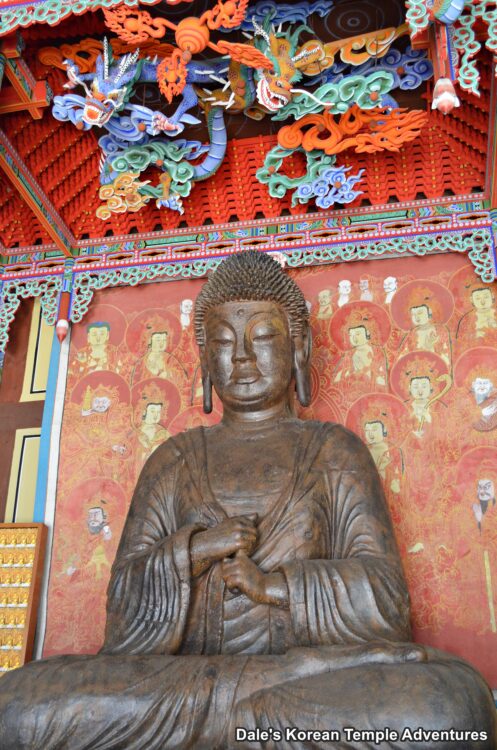
Conclusion
So the next time you’re at a Korean Buddhist temple, have a careful look around. And if you see a figure clasping his hands, holding one finger inside a fist, you’ll know that you’re looking at the Buddha of Cosmic Energy: Birojana-bul. And that this Buddha holds a very special place in the pantheon of Buddhas inside Korean Buddhism.
